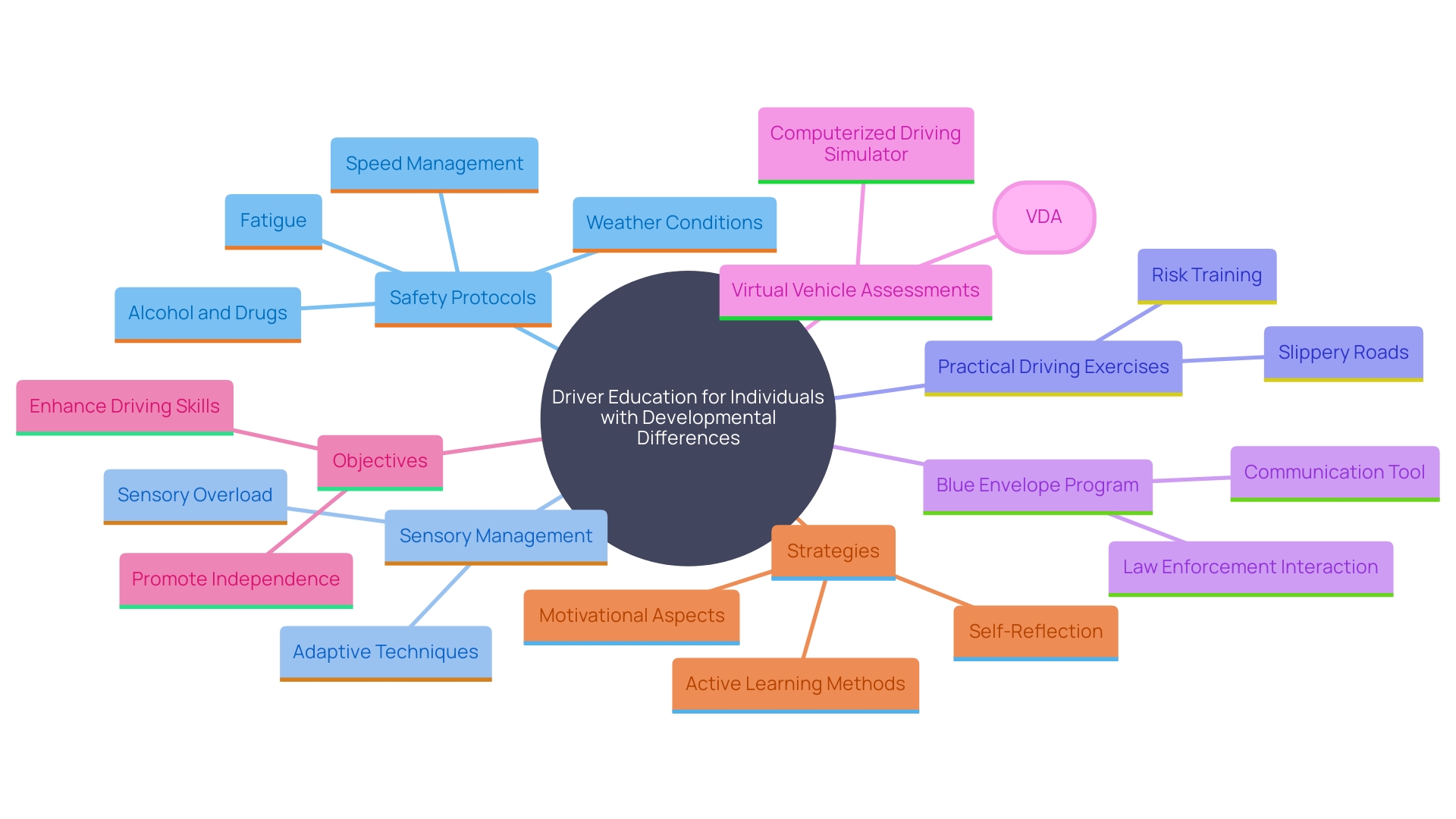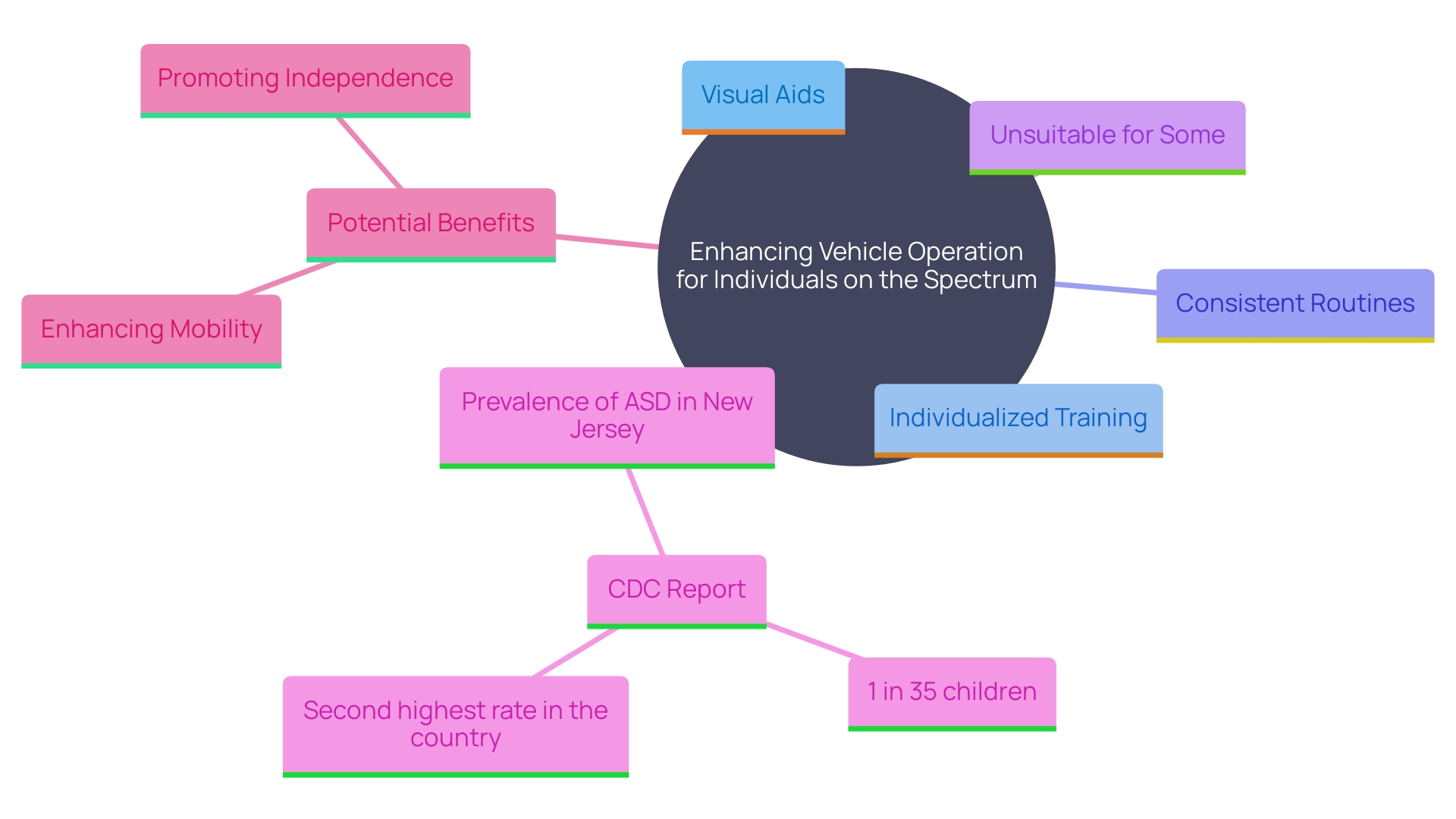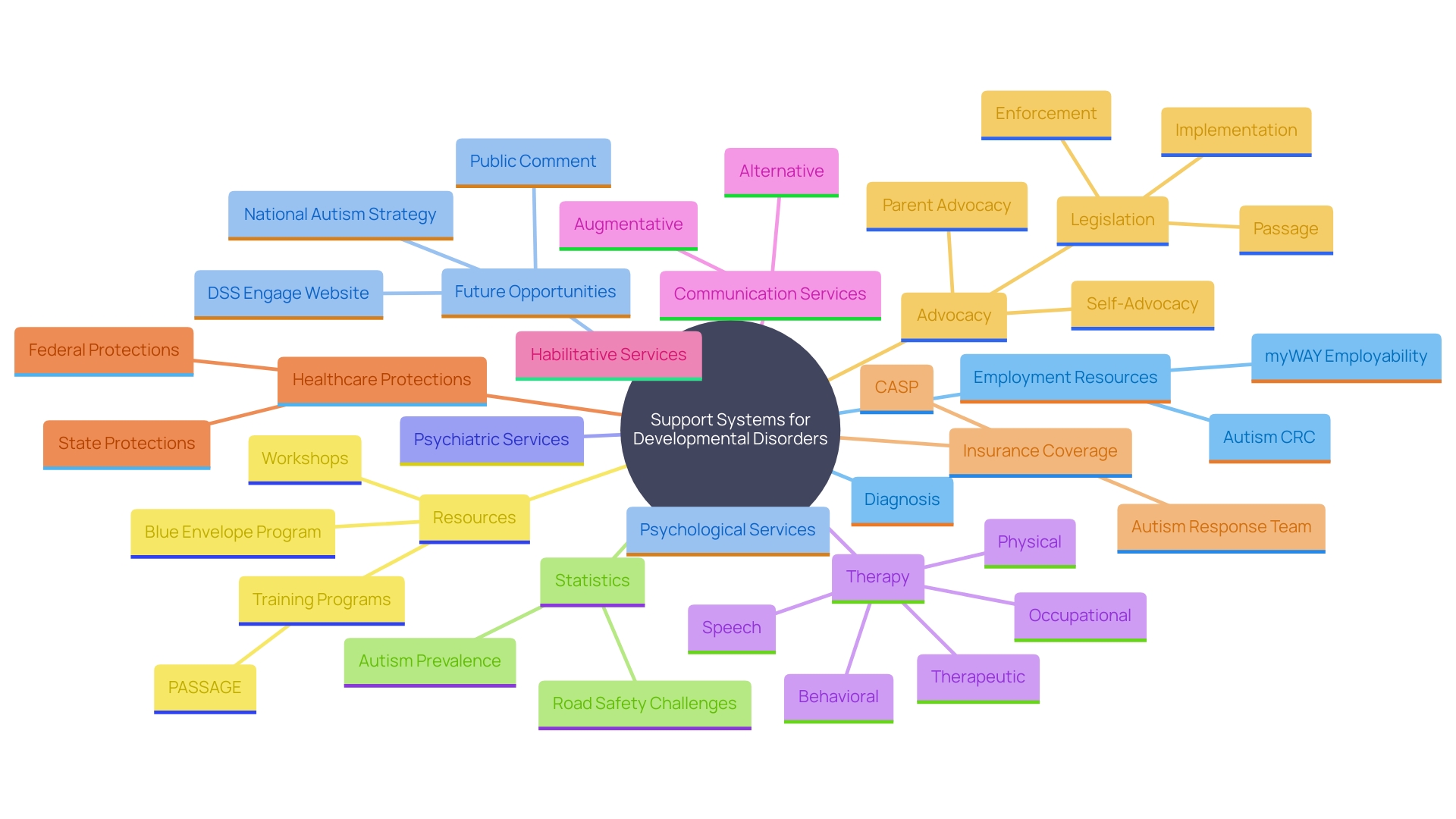Introduction
Navigating the complexities of driving can be a daunting task for anyone, but for individuals with autism, it presents unique challenges that require specialized support and resources. The Texas Driving with Disability Program is a pioneering initiative designed to address these needs, offering tailored training and assistance to ensure that autistic drivers can safely and confidently navigate the roads. This comprehensive program not only focuses on enhancing driving skills but also emphasizes the importance of multidisciplinary support, including adaptive driving assessments and modified vehicles.
By fostering independence and promoting safe driving practices, the program aims to improve access to educational, occupational, and social opportunities for individuals with autism. Essential components such as the Blue Envelope program further support positive interactions with law enforcement, ensuring a safer and more inclusive driving experience for everyone involved.
Understanding the Texas Driving with Disability Program
The Texas Driving with Disability Program is a crucial initiative designed to assist people with disabilities, including those on the spectrum, by equipping them with the essential skills and resources to drive safely. Acknowledging the distinct challenges encountered by people with autism, the program provides customized assistance to improve vehicle operation skills, ensuring safety on the road. As highlighted in research, individualized training is crucial for autistic adolescents in obtaining a driver's license, promoting independence and mobility, and improving access to educational, occupational, and social opportunities. The program also highlights the significance of mentoring and equipping young individuals and their families to navigate developmental milestones such as licensure and vehicular operation, while recognizing the necessity for multidisciplinary teams and resources to address specific needs. In situations where operating a vehicle may not be optimal or secure, different methods to promote autonomy and involvement in essential adult activities are taken into account, ensuring thorough assistance for autistic people and their families.
Key Components of the Texas Driving with Disability Program
The program offers essential components like specialized driver education courses, adaptive driving assessments, and access to modified vehicles. These resources are crucial for individuals on the spectrum to gain the necessary skills and confidence to drive safely. According to a study funded by the Eunice Kennedy Shriver National Institute of Child Health and Human Development, young drivers, including those with autism, are at a higher risk of crashes shortly after obtaining their licenses. Therefore, it's vital to have tailored programs that address their unique needs.
The use of adaptive vehicle evaluations, such as the virtual assessment (VDA) utilized in Ohio, has proven effective in identifying at-risk operators. The VDA, a 15-minute self-guided simulated drive, evaluates essential operating skills like vehicle control, lane positioning, and hazard awareness. This type of focused evaluation assists in making sure that people with autism can manage actual situations on the road safely.
Furthermore, the incorporation of individualized training is essential. As emphasized by the Center for Autism Research's PASSAGE Program, personalized assistance can significantly improve the capabilities of autistic people, promoting independence and access to wider opportunities. This approach not only enhances vehicular skills but also fosters greater community engagement and social inclusion.

Driver Education and Safety for Individuals with Autism
Driver education for individuals with developmental differences should prioritize safety protocols and the management of sensory sensitivities. Programs must include practical driving exercises that prepare drivers for real-world scenarios, addressing potential distractions and teaching coping strategies to manage anxiety and overstimulation. A case of such customized assistance is the Blue Envelope program, which seeks to enhance interactions between drivers with developmental disorders and police officers. Under this initiative, individuals with autism receive blue envelopes containing important information about their condition, which they can present to officers during traffic stops or other situations, helping to alleviate stress and improve communication. This program involves all law enforcement agencies in the county, ensuring widespread implementation and support. Furthermore, the use of virtual vehicle assessments (VDA) can be advantageous. These assessments simulate common serious crash scenarios and evaluate operating skills such as vehicle control, lane position, following distance, and hazard awareness. This tailored method not only improves transportation skills but also fosters autonomy and mobility, essential elements for the welfare and community engagement of people with developmental disorders.

Strategies for Safe Driving with Autism
Applying approaches for secure vehicle operation is essential for improving the experience for individuals on the spectrum. Considering that the prevalence rate of spectrum disorder is notably high, as observed in New Jersey where 1 in 35 children are diagnosed, customized strategies become essential. Encouraging the use of visual aids, such as maps and signs, can significantly assist with navigation by providing clear and structured guidance. Creating a consistent routine behind the wheel can further aid in reducing anxiety and enhancing concentration during sessions. Research has shown that individualized training is a critical component for autistic adolescents in obtaining a driver’s license. This personalized approach can promote independence, mobility, and potentially lead to improved access to educational, occupational training, social, and community engagement opportunities. As Professor Robyn Young indicates, although this condition is social in nature, operating a vehicle is a physical and organized task, allowing those on the spectrum to thrive with appropriate assistance. Moreover, many agencies have implemented disability warning signs to mitigate risks, though their effectiveness remains under evaluation. For some, operating a vehicle may not be a suitable choice, and other methods to promote independence should be taken into account.

Resources and Support for Drivers with Autism
A range of materials is accessible to assist people with developmental disorders in their transportation journey. Local advocacy organizations for developmental disorders frequently offer workshops and information sessions that address driving skills, legal considerations, and insurance options customized for people with disabilities. One example of a practical resource is the Blue Envelope program, a collaboration between Lehigh Valley Health Network and the Lehigh County Chiefs of Police Association. This initiative aims to enhance communications between people with autism and police officers during traffic stops or accidents. Autism spectrum disorder affects about 1 in 36 children and more than 2% of adults, making tailored support crucial for safety and independence on the road.
Healthcare providers play a significant role in supporting autistic people through developmental milestones like obtaining a driver's license. According to researchers at the Children’s Hospital of Philadelphia, individualized training is essential for autistic adolescents, promoting independence and mobility. Programs like the PASSAGE Program at CHOP and Teen Driver Source offer resources to help families navigate this transition period. These efforts emphasize the significance of multidisciplinary teams and resources customized to each person's needs.
Statistics from the Centers for Disease Control and Prevention indicate that children with developmental disorders face numerous obstacles, including learning road safety and interacting with road elements, which could increase their risk of traffic crash involvement. By utilizing programs and resources that address these unique challenges, we can enhance the driving abilities of people with developmental disorders, ensuring safer roads for everyone.

Best Practices for Law Enforcement Interactions
For individuals on the spectrum, understanding how to interact with law enforcement is vital. Programs like the Blue Envelope initiative, launched in collaboration with Lehigh Valley Health Network and the Lehigh County Chiefs of Police Association, are designed to improve these interactions. Drivers with developmental disorders are provided with blue envelopes containing crucial information about their condition to hand to officers during traffic stops, accidents, or other situations. This initiative, supported by all law enforcement agencies in the county, aims to reduce the stress and communication barriers often faced by those on the spectrum.
Furthermore, training programs for law enforcement on awareness of developmental disorders are essential. The Modesto Police Department in California, for instance, has become the first in the state to be autism-certified, showcasing their commitment to better serving the community. As Chief McFarland of Effingham Police Department emphasizes, comprehending and recognizing the behaviors linked to the condition is essential for ensuring safer encounters. Legislation efforts, such as those proposed by State Rep. Paula Stark, also aim to mandate autism-specific training for police, further promoting safety and understanding in these interactions.
Enhanced training and awareness not only foster understanding and compassion but also significantly improve the safety and well-being of individuals with autism during law enforcement encounters.
Conclusion
The Texas Driving with Disability Program stands out as a vital resource for individuals with autism, addressing their unique driving challenges through specialized training and support. By focusing on individualized education and adaptive assessments, the program fosters independence and confidence, empowering autistic drivers to navigate the roads safely. This initiative not only enhances driving skills but also promotes access to educational, occupational, and social opportunities, reinforcing the importance of tailored support for achieving mobility.
Key components of the program, such as adaptive driving assessments and the Blue Envelope initiative, play a crucial role in ensuring that interactions with law enforcement are positive and stress-free. These resources facilitate safer driving experiences, allowing individuals with autism to present important information about their condition during traffic stops. Such initiatives highlight the necessity of comprehensive support systems that encompass both driving education and community engagement, ultimately improving the overall safety and inclusivity of the driving environment.
In conclusion, the Texas Driving with Disability Program exemplifies a commitment to empowering individuals with autism through tailored resources and support. By prioritizing safety, fostering independence, and enhancing community interactions, the program not only equips autistic individuals with the skills necessary for driving but also advocates for a more inclusive society. As more families and communities become aware of these resources, the journey toward safe and confident driving for individuals with autism will continue to progress, creating a brighter future for all.




